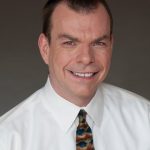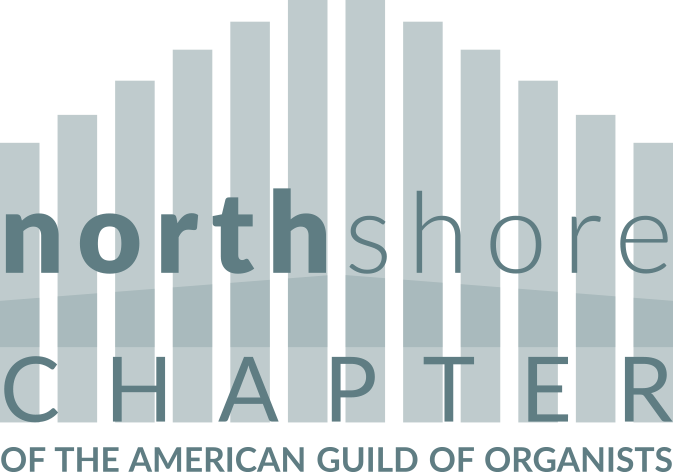
Alan Hommerding
“There is no sound more beautiful than people singing God’s praise.”
These words, instilled in me by my first organ teacher and choir director, Ann Celeen Dohms, have become a life-long mantra.
Before I sang in her boys’ choir or was her organ student, I was fascinated with that imposing (to a small boy) stand of pipes up in the loft of St. Mary of the Assumption church in Port Washington, Wisconsin. I was thrilled by its sound, and enthralled by the mystery imparted by its distance.
My fascination only increased when I began to serve at Mass, and no longer had to discreetly turn around during Sunday Mass, risking a tug on my ear by one of my parents. In fourth grade, I learned that we were to get a new music teacher (Sr. Juliette having retired), and she wanted to start a boys’ choir! At last I’d have legitimate access to the loft and that mysterious contraption. Though I was not graced with the greatest of vocal abilities, I clearly had a talent for music, which even the aged and sometimes cranky Sr. Juliette had acknowledged.
I tried as best I could to figure out what all the different tabs did, and the extra keyboard, and the foot-pedals (my mother, who had played in her parish church as a teenager, called them that). There were many books in the loft with the words “Flor Peeters” on the cover. I was sure they contained music you played with the foot-pedals, but in German.
On the home front, my older sister begged and begged for an electronic home organ, which were the rage in the mid-1960s. Eventually a Thomas Color-Glo organ appeared in the living room. Since we were a truly poor family, only she had lessons. I was given a cousin’s old clarinet, and I played in the band in grade school and high school. (Eventually I’d enter college as a clarinet performance major.)
Being a typical little brother with a deep interest in music, I began to mimic whatever my sister was learning in organ lessons. In junior high, I took over her job as chapel organist for the little Catholic hospital in town. Eventually Miss Dohms got wind of this and asked to hear me play. She agreed to give me lessons for free if I’d play for the first Sunday Mass. (Later, when she and I had moved from teacher/student to being colleagues and friends, I came to learn of her dislike of early rising.) My Sunday routine throughout high school was 6 a.m. Mass at St. Alphonsus and 7:30 a.m. Mass at St. Mary’s. In addition, I played M-F 6 a.m. Masses in the chapel. In music school at UW-Milwaukee, I switched my major from clarinet performance to theory/composition, with organ as my main instrument. I also joined our student chapter of AGO, and eventually was the chapter dean. This began my unbroken, life-long membership in the guild.
After graduation, I was hired as choir organist at St. John’s cathedral in Milwaukee. Like many Roman Catholic men of my generation, I thought having a vocation meant pursuing ordination. So I went to seminary in Baltimore. Though I completed the graduate studies in theology, the seminary and I both discerned that music was my true vocation. I spent some additional time in Baltimore, taught high school religion, studied in Westminster’s summer programs, and more organ work at the Peabody Conservatory. Eventually I ended up back in the Midwest, where I began to study privately with Craig Cramer at Notre Dame, and where I soon went for graduate study in music and additional graduate work in liturgy.
Though I went on to minister in a Roman Catholic parish in Milwaukee, I saw an ad less than a year later for an opening at World Library Publications. Twenty-seven years later, I am still at WLP as Senior Liturgy Publications Editor. I was first hired in sales and promotions – a terrible place for a bookish hyper-introvert. The editorship of WLP’s AIM: Liturgy Resources magazine came open, and twenty-five years later I am still at its helm, as well as the WLP Organ Library. I’ve been able to put my musical, theological, and liturgical background to good use as an editor, author, composer, speaker, and workshop presenter. My greatest delight, however, was being part of publishing some of Ann Celeen’s music from my boyhood.
“And when from death I’m free, I’ll sing on … and when from death I’m free, I’ll sing and joyful be, and through eternity, I’ll sing on.”
To the end, my musical “Auntie Mame” is how I referred to Ann Celeen. In 2010, I was the organist for her funeral Mass. At the end of the Mass were her favorite stanza from “What Wondrous Love Is This?” and the first prelude from the Orgelbüchlein she taught me: Alle Menschen Müssen Sterben (All Mortals Must Die), with her handwriting still on the page. Through this life, through my work at WLP and as music director at Edgebrook Community Church, and through eternity, I’ll sing on, making music for the glory of God.
Alan Hommerding
